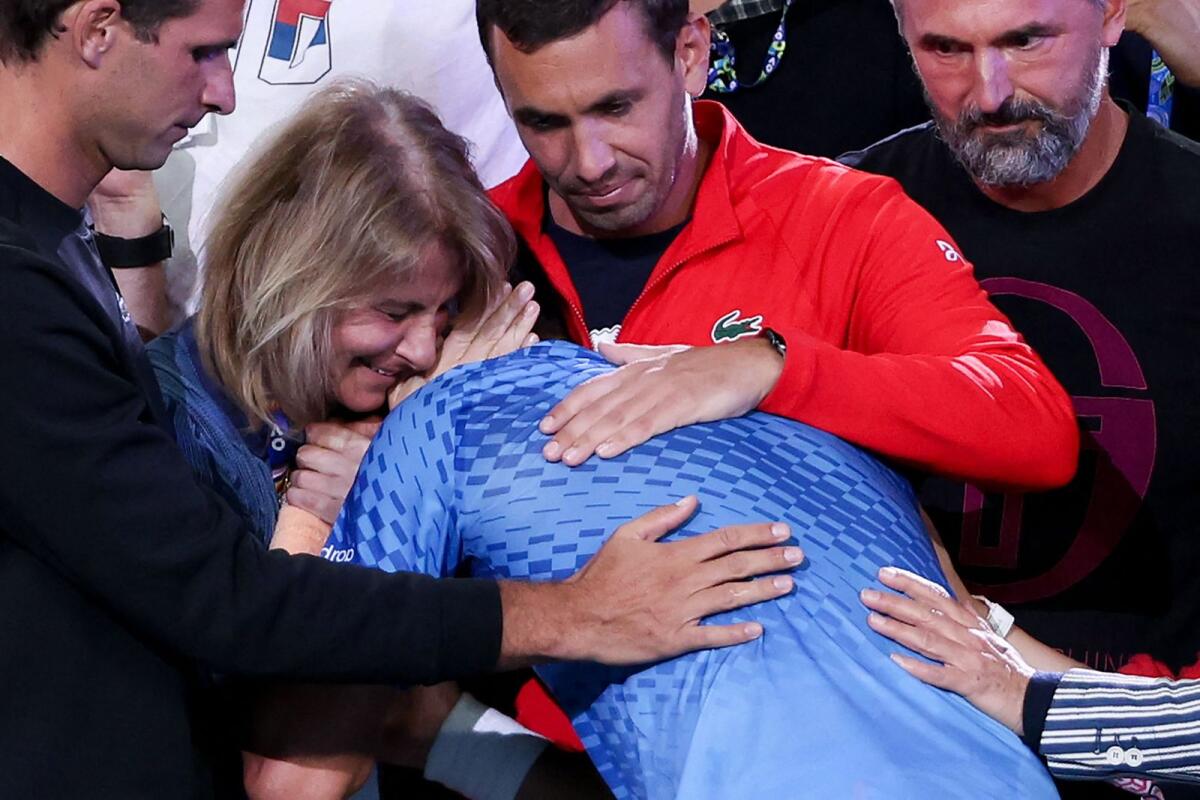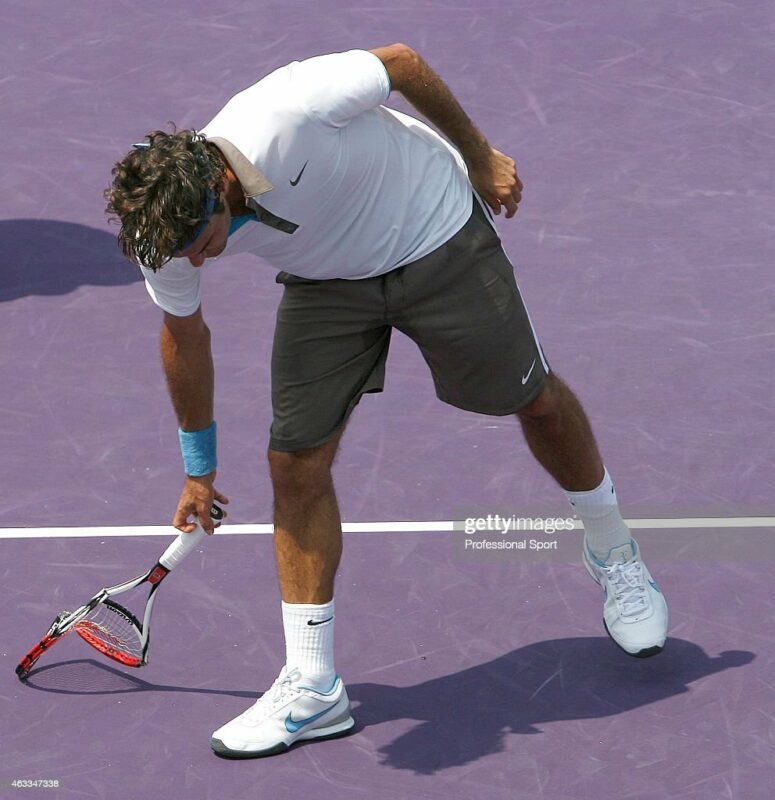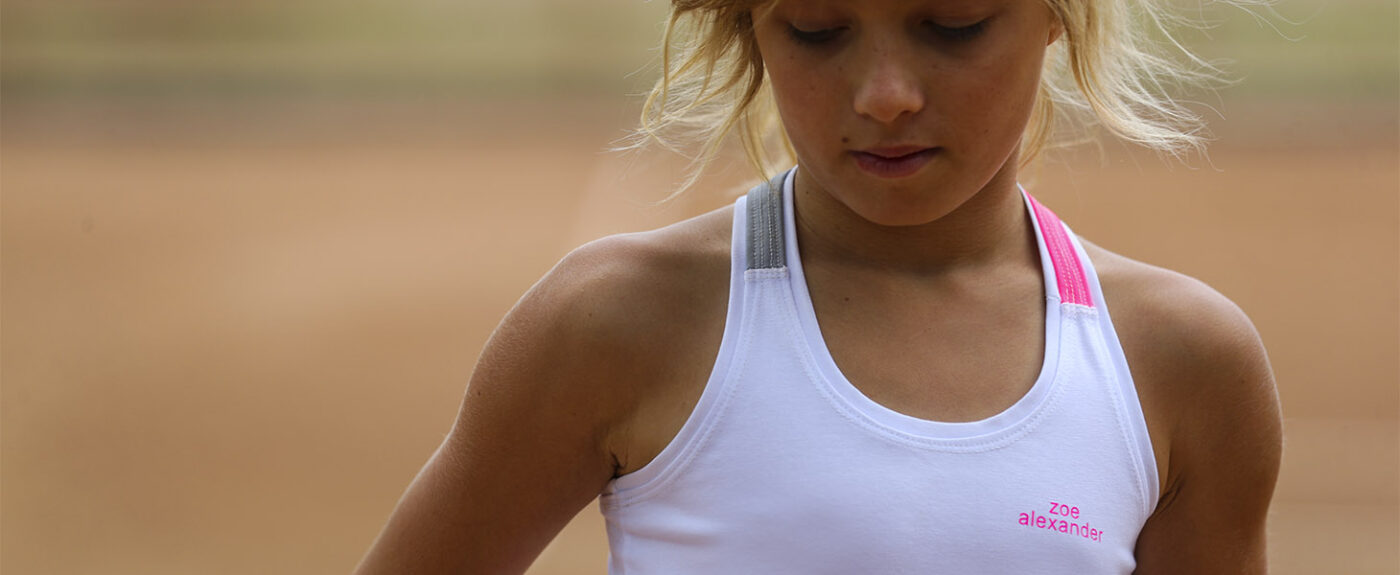Tennis Psychology
How to deal with anxiety on a tennis court
How to deal with anxiety on a tennis court? Who is your boss? Your brain or your body? These are the fundamental questions all tennis players need to answer whatever the level and whatever the occasion.
What every player needs to manage – the mental approach to anxiety on a tennis court
Even the top tennis players in the world admit to being anxious when the pressure is great, and while most players at the very top of the game have developed coping strategies to successfully deal with their anxiety, finding an approach that works for the individual merits regular attention. Look at Novak Djokovic’s reaction following his triumphant win over Stefanos Tsitsipas at the 2023 Australian Open Grand Slam. The sheer emotion of his win overwhelmed him shortly after the final point was played, when he joined his family and team in their box.
Djokovic, for one, has often spoken of his meticulous off-court preparation, and how exploring new ways of improving his well-being off court has helped his performance on it. He turned to meditation five years ago – and while that approach might not necessarily work for everyone, it’s something that has certainly been beneficial for the number 1 player.
“I won’t tell you what I gain with it, but I’ll tell you what I lose with it,” he said of his new approach in 2017. “I lose fear, I lose anxiety, I lose stress. I guess in the end of the day, that’s what you’re looking for.”
By its very nature, competition can cause athletes to react both physically and mentally in a manner that can negatively affect their performance abilities. Off court activities won’t necessarily allow you to deal with a problem on the court, and physical and mental affects of anxiety can creep up at any moment.
The physical and mental affects of anxiety can include:
• Increased muscle tension
• Trouble breathing
• Increased fatigue
• Reduced muscle coordination
• Reduced concentration
• Impaired decision making and tactical judgement
• Angry outbursts
• Reduced confidence
• Giving up mentally
Stress, arousal and anxiety are terms used to describe this condition. Most competitive tennis players have felt feelings of nervousness or anxiety at some point, and many have left the court feeling they have “choked”, “bottled it” or “lost the plot” when the red mist descended.

Was Roger Federer always so calm on court?
Tennis is a simple game, unless you are the one playing! The potential for frustration and anxiety on a tennis court is considerable. You are constantly forced to make split-second decisions and improvise. Between the rallies and games you have an awful lot of time to think about what you should have done differently. If, like young Federer, you’re pursuing perfection, you cannot but fall short of your own expectations. Tempers rise and need an outlet, there is a racket in your hand that you can take it out on!
The story of how a teenage Federer ripped the new curtains separating the courts at the Biel tennis academy is legendary.
I looked at the curtain and thought that it was so thick that there was no way anybody could wreck it,
said the youthful offender Roger. Ten minutes later, I turned around and hurled my racket as the curtain like a helicopter. It sliced through the curtain like a knife going through butter. Everybody stopped playing and stared at me. No, I thought, that’s impossible! The worst nightmare!
He had been explicitly warned about damaging the new curtains. As punishment, he spent a week cleaning toilets and offices and preparing courts between 6 and 7am. For a boy far from a morning person and years away from the real world of parenting, it was the ultimate punishment.
Roger continued to struggle with his anger, much to the embarrassment of his parents Robert and Lynette Federer. He tells of a training session when his father left the court in frustration at Roger’s fits of anger:
He said:’I don’t enjoy playing with you like that.’ So he put five Swiss francs on the bench next to me and said, ‘I’m leaving, I’ll see you at home.’ And I couldn’t believe he left me there because it was going to be like a 45 minute bus ride back home. So I waited for like an hour until he came back and he never showed up. And I realised he had actually left when I checked the car park…
Many see the death of his former coach, Peter Carter, on 1st August 2002 as the trigger for his transformation into “Mr Cool”, but the process began much earlier. That sort of mental transformation doesn’t happen overnight; Federer first had to find a new identity on the court. For a while, he was even too calm.
Roger recognised he was an emotional player and knew going on tour and having the pressure of wanting to do so well ate him up a little bit.
I just thought: I can’t have a career like this. Or I will be a wreck by the time I am 25. I wanna enjoy myself on the tour. It’s supposed to be this dream come true. I think playing in front of live audiences and live TV helped me relax a little bit. I wanted to be known to be mentally strong. I was able to turn around thankfully. I am very happy I went through this whole process. That was just me. I was a bit crazy, but in a good sense, I believe.
His transformation is one of the most remarkable in tennis: from the hot-head who embarrassed his parents to the perfect ambassador for the sport. By staying cool-headed, he almost always made the right decisions, even at critical moments. It became a Federer trademark that the more crucial the point, the better he played. And so for years, victories in tight matches – decided by just a few points – could almost be taken for granted.
Other players throw their rackets, they give in, they go for too much.Roger didn’t. He didn’t beat himself. That’s what wins you a lot of matches.

Our 4 Top Tips for Regulating Anxiety on a Tennis Court
The key point is not to eliminate feelings of anxiety since some anxiety can benefit performance. Instead, it is crucial to control and manage feelings of anxiety more effectively. Reducing muscle tension is particularly important, because muscle tension not only impairs coordination and timing, it also uses your energy because your muscles are working overtime.
A number of relaxation tips have been developed to help players cope more effectively with excess anxiety and nervousness.
Here are our top four tips for coping with stressful situations on a tennis court:
1) Slow down – take time between points
One of the things that excess anxiety often does to players is to cause them to play too quickly. When the pressure starts to build, and feelings of frustration and anger surface, one of the easiest (but least effective) ways of coping is to rush and get off the court. This may occur because anxiety can be uncomfortable, and one way to get rid of it is to get away from the situation causing the anxiety. Therefore, when a player experiences feelings of anxiousness and tension, and starts rushing their serves, they should walk to the back of the court and play with their strings, go for the towel, or walk to the ball farthest away from them to use for the next point.
An even more effective way to slow down is to develop consistent pre-serve and pre-service returns routines. This enables you to keep composed and slow down under pressure.
2) Breath control
One of the simplest ways to cope with pressure is through proper breathing. Research has indicated that in pressure situations, players do not coordinate their breathing patterns with their stroke production. Often they hold their breath while performing (thus increasing muscle tension) rather than breathing out (thus decreasing muscle tension). Some players accentuate breathing out by
‘grunting’ when striking the ball to ensure that they do breathe out on every shot.
Deep breathing from the diaphragm between points will help to reduce accumulated pressure and help keep the player relaxed.
3) Set up stressful situations in practice
A very effective way to prepare for stressful situations is to occasionally practice under pressure. As you become more accustomed to playing under these conditions, you will not be negatively affected by pressure during competitive situations.
For example, instead of simply practicing groundstrokes, try to get a certain number of strokes in a row to fall past the service line as you practice keeping the ball deep. If you hit a ball short before you reach your target you have to start over.
As you get closer to your target the pressure starts to build, which is similar to a competitive match.
4) Have fun – enjoy the situation
Most top players look forward to pressure situations rather than fearing them. Keeping the enjoyment of tennis foremost in one’s mind can help to prevent burnout, especially in younger players. This involves keeping winning in perspective and focusing on the experience without undue concern for the outcome.
Remember, ‘it’s only a game’, and games are meant to be fun.
SO WHO IS YOUR BOSS?
Extracts from Roger Federer (ISBN:978-3-907126-11-0) by Simon Graf, the journalist for the Swiss “Tages-Anzeiger”. This is a book we strongly recommend when it comes to understanding how Roger was King of the Court for the masses and for the duration he achieved.


